Arabic Sentiment Analytics for Banking Customer Experience
Sentiment analysis of banking customer experience is of the most important needs of any bank, given the complexity of today’s banking needs and competitive landscape. Having a machine learning model that can analyze sentiment in customer feedback is a valuable instrument to enrich a bank’s performance and increase revenues through customer retention, loyalty, and word of mouth brand awareness.
For banks that need Arabic sentiment analysis, this becomes even more important because they must ensure that the model they are using is the right one for them. In this article, we explain all about banking sentiment analysis and how the right CX analytics platform for the Arab-speaking world can help you grow.
What is Banking Customer Experience?
Customer service is the support you give to your customers before, during, and after a sale of your product or service. The kind of customer service differs from industry to industry. In banking, customer service can range from helping customers choose the right financial products, the closest ATM, making a direct bank deposit, helping with online transactions or mobile applications, as well as in-person transactions.
The experience that customers have in their interactions with a bank thus becomes their banking customer experience. For a bank, or any other business for that matter, analyzing customer experience for sentiment is extremely important because it can give a very granular picture of how a business is performing in terms of customer satisfaction as well as in comparison to their competitors.
There are numerous other sentiment analysis applications, all of which, ultimately, is meant to improve business performance through nurturing happy customers.
What is Banking Sentiment Analysis?
Analyzing customer experience data to see what customers like and don’t like about your bank is what banking sentiment analysis is all about. Analyzing customer sentiment needs to be done objectively and from a wide variety of sources as well as a large amount of data to give the most accurate results.
That’s why you need a machine learning model that can gather, process, and analyze customer feedback data at speed and scale to give high-precision customer insights. This helps avoid human error due to limitations and biases that can creep in while manually analyzing feedback data.
Machine learning insights can give you a clear indication of market trends, customer intent, and customer satisfaction. Banking customer experience analysis can help banks improve customer engagement and value by helping them use insights in several important ways, some of which are:
- Using contextual data to better understand customer pain points
- Improve customer engagement through better customer service initiatives
- Monitor and be prepared for new market trends
- Measure customer satisfaction over time and make necessary adjustments
- Taking measures to increase financial literacy amongst customers
- Develop relevant CX strategies for different kinds of customers such as individuals, small businesses, and major corporations.
Introduction To Arabic Banking Sentiment Analysis
Sentiment analysis of Arabic banking customer experience needs special attention because Arabic is a complex language, with numerous dialects, all with their own grammar and linguistic rules.
Accurate sentiment analysis of Arabic banking data requires that the customer experience analytics platform analyzes all the data natively in Arabic without using translations. To achieve this, it is necessary that the CX platform is built and trained on Arabic natural language processing (NLP) machine learning tasks.
What Are The Challenges in Arabic Banking Sentiment Analysis
The challenge that Arabic banking customer experience analysis for sentiment mining faces is that most CX platforms on the market offer sentiment analysis in various languages but unfortunately most often it is via machine translations. While machine translations can work for certain languages with common roots such as Italian, Spanish, Latin, and English, this same approach cannot work for languages with completely different linguistic rules. This is because translations do not cover the complexity of nuances in rich languages like Arabic.
They also lose out on colloquial expressions and use of the language because customer experience reviews are mostly written in everyday language and not necessarily with formal grammar and sentence structure.
Overcoming Challenges in Analyzing Sentiment In Banking CX Data
To overcome the challenges that arise in analyzing sentiment in Arabic banking customer experience data, the machine learning model for CX analytics needs to be trained on Arabic datasets with Arabic NLP. It needs to go through a series of steps to make it ready to analyze sentiment in Arabic feedback. These can be broken down as below.
- Build a part-of-speech tagger: Arabic words are classified at a grammatical level so that the CX platform can identify conjunctions, nouns, adjectives, subordinate clauses, and prepositional phrases in the data.
- Lemmatization. In this step, the rules of conjugating nouns and verbs based on gender, tense, etc. are applied, which help the model determine the roots of words to help with context and grammar. For example, “banking” and “banker” are based on the root word “bank”.
- Building prior polarity. This step determines the positive, neutral, and negative context of a word. It is because of this step that eventually, the model’s sentiment analysis API will calculate the intensity of the sentiment polarity of words in a review, which will aggregate and determine whether the review is good or bad. For example, Excellent (+1), Good (+0.5), Average(0), and Poor(-0.5).
- Grammatical constructs. Negations and amplifiers are determined and applied so that the banking customer experience analytics model can understand the overall review flawlessly in Arabic. This is where Arabic NLP becomes extremely important because it is essential that the model reads Arabic natively as rules of negations and amplifiers are different for different languages.
- Sentiment scores. Once all the above steps are concluded, sentiment scores are fed to the algorithm. Now that the model is trained you can use it to gain an overall sentiment overview or dive deep with aspect-based banking sentiment analysis.
Discover More: Complete Sentiment Analysis Process
How Does Repustate Analyze Banking Customer Experience Using Sentiment Analysis?
Repustate’s Arabic sentiment analysis solution reads and understands the Arabic language in its native format. It is based on a rich and varied corpus and training datasets from multiple disciplines and sources. This is what makes it so high in precision and accuracy.
The CX analytics platform has its own Arabic lemmatizer, part-of-speech tagger, and sentiment models. It supports standard Arabic and can be trained on the Gulf Peninsular, Levantine, and Egyptian dialects. This makes it very proficient in understanding the intent behind texts in various Arabic dialects and returning a corresponding classification and sentiment score.
With regards to banking customer experience sentiment analysis, let us look at the review below.
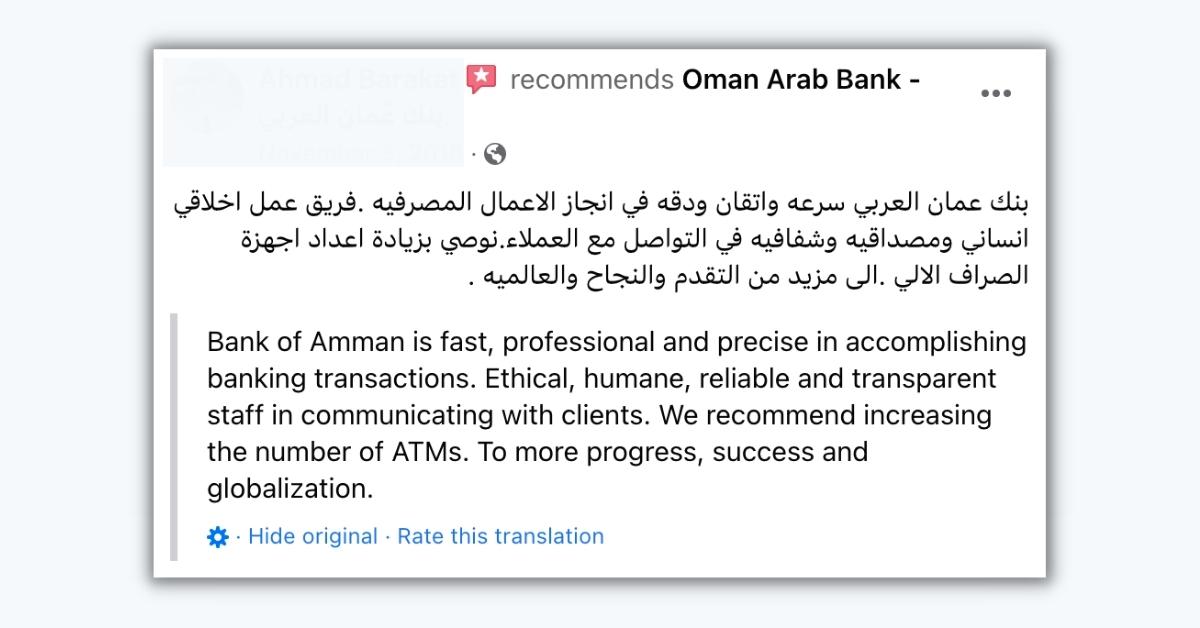
In this review, you can see the first part of the review is positive but the customer gives negative feedback in the second part mentioning that they wished the bank had more ATMs.
Now, even though the customer has not specifically used negative words, when we use the Banking aspect model of Repustate’s CX platform, it understands banking terminology and semantics through semantic analysis and contextual understanding. It therefore automatically infers that the customer considered this as a pain point, and therefore, this part of the review is negative. In other words, the AI in the model understands that things are not black and white as there are certain things that the customer likes about you and other factors that they don’t.
It will review all feedback in a similar manner and present these in-depth banking customer experience insights on an intelligent text analysis dashboard in the form of charts and graphs.
When a bank analyzes reviews like this through Repustate’s Arabic sentiment analysis model, not only do they know customer opinions but also clear ways to bring about improvements in their business. This ultimately should be the goal of any sentiment analysis tool.
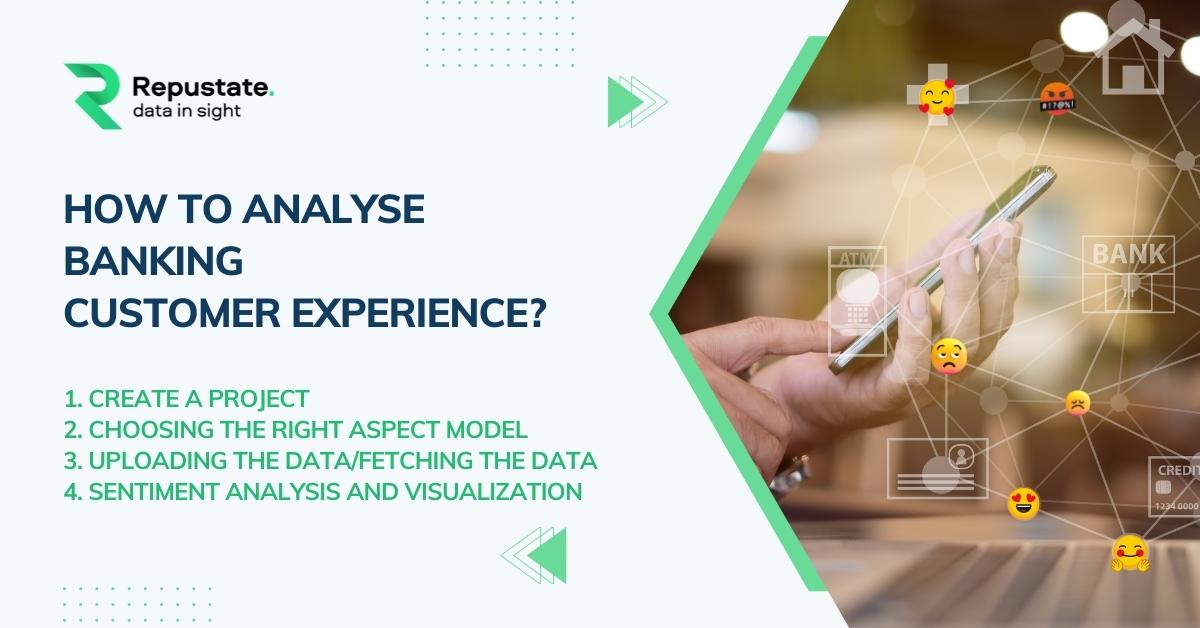
Following Are The Steps To Analyze Banking CX Using Repustate Banking Aspect Model
- Create a project You can create a project in Repustate’s CX sentiment analysis platform, Repustate IQ, and give it a name so that you know which project relates to which subject as you analyze tons of banking customer experience feedback. You can do it for survey sentiment analysis, social media listening data, or any other data source.
- Choosing the right aspect model Repustate IQ is available in many aspect models. In this case, you will choose a banking aspect model. This ensures that when the CX analytics algorithms are reading the customer feedback for banking sentiment analysis, they are clustering the words into appropriate topics and aspects such as “money, “deposit”, and “interest rate”, apart from general ones such as “location”, “professionalism”, or “performance”.
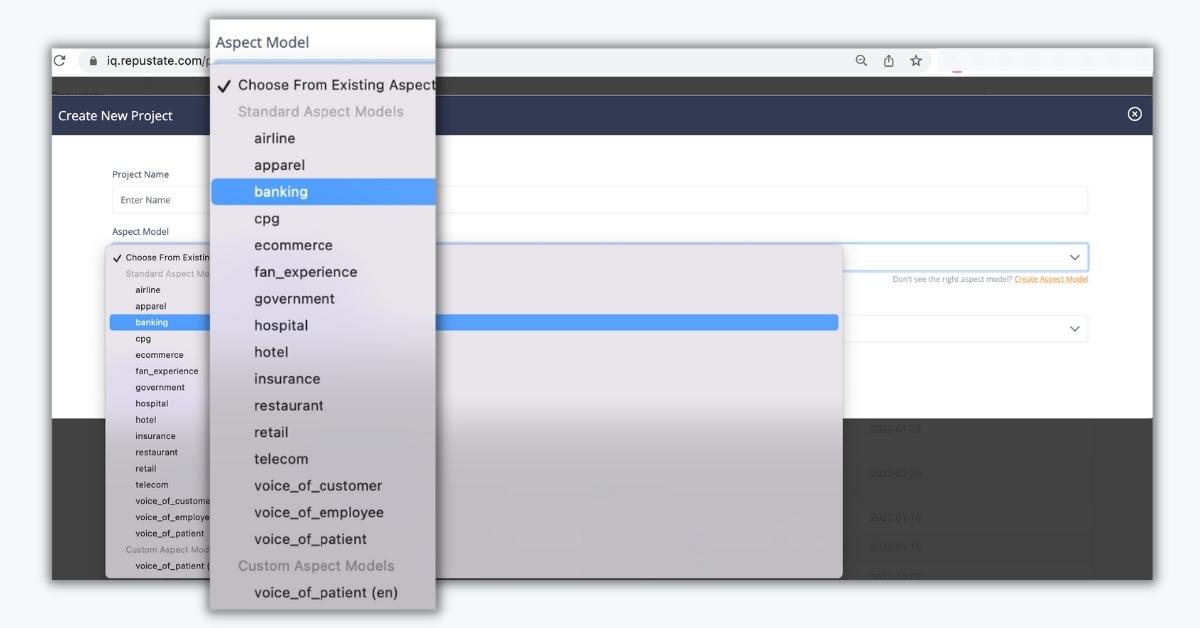
- Uploading the data/Fetching the data You can either input the URL of the particular review platform or upload the data in the form of an excel sheet.
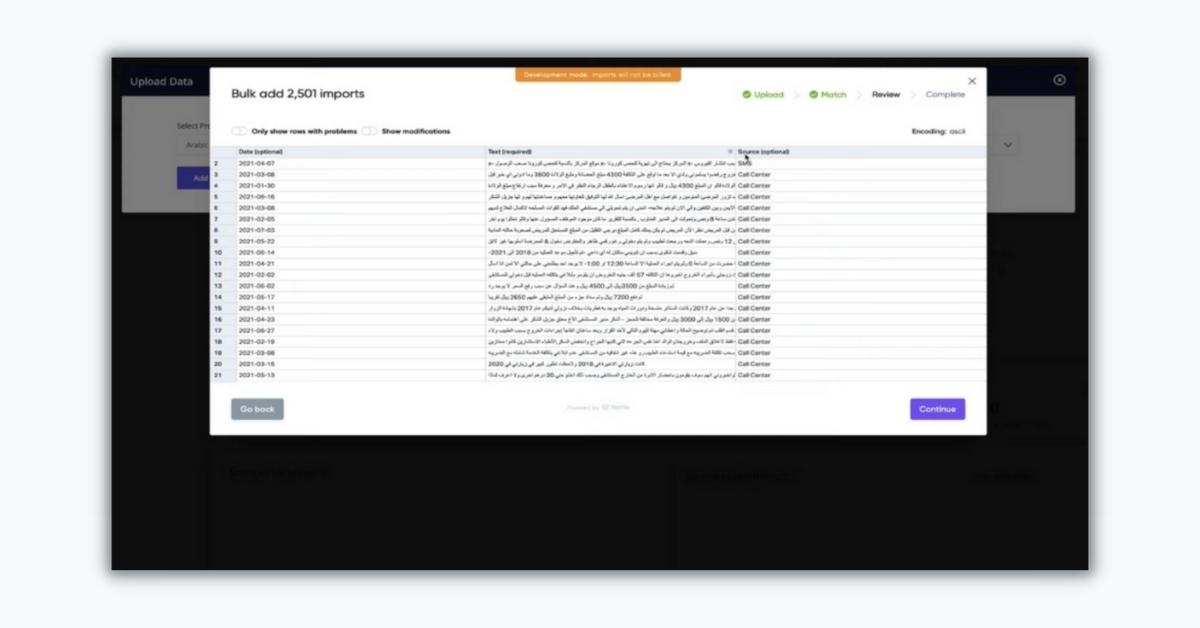
- Sentiment analysis and visualization Upon fetching the data, the CX analytics platform will set the sentiment analysis of the data into motion. Within minutes, you will get different charts and graphs that will give you granular aspect-based insights. Some of the insights are as below.
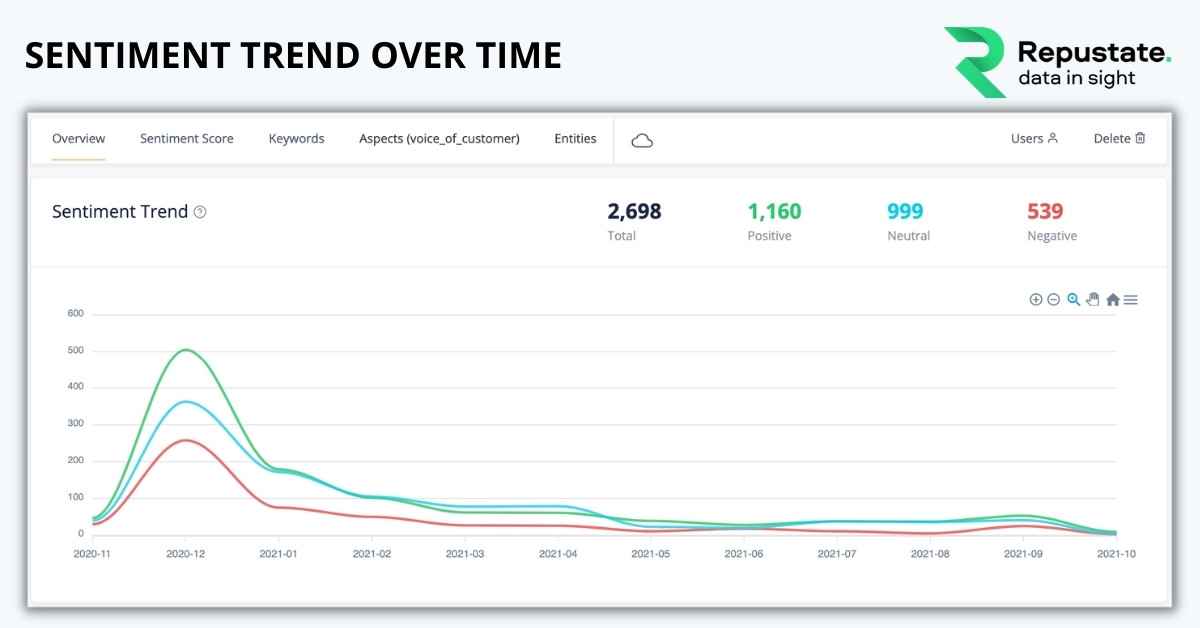
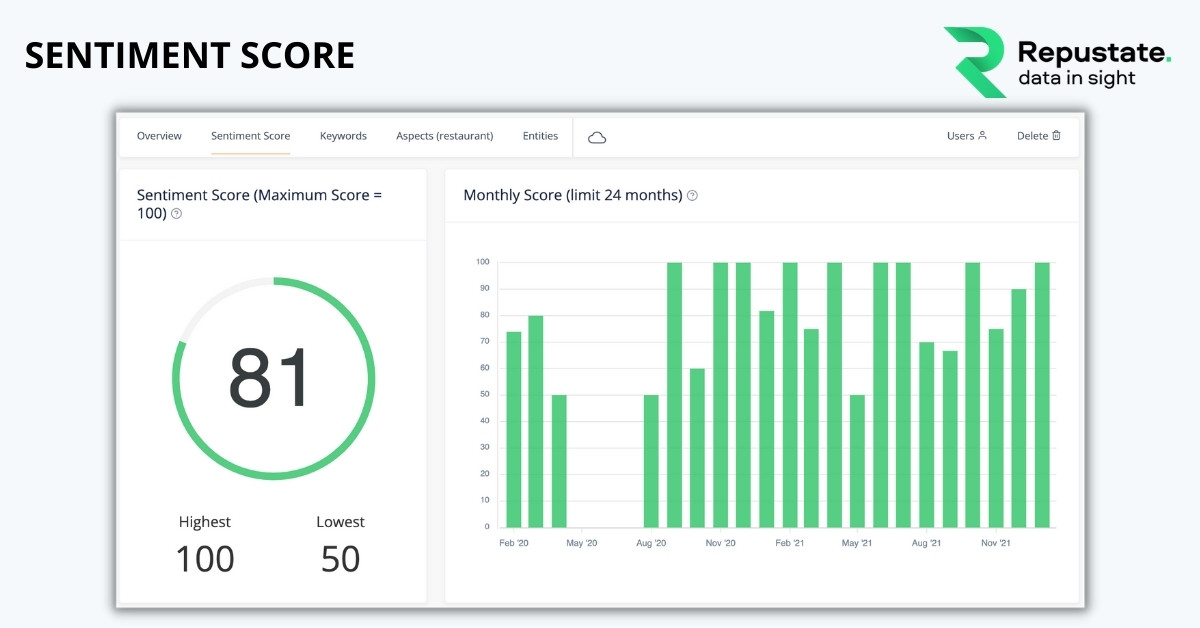
There are numerous other banking customer experience insights that the dashboard will provide you with, and these will give you a data-driven view of what you can do to better your banking services to please your customers more effectively. Below you will read more about the key CX analytics you can get with Repustate IQ.
What Are Important CX Analytics Insights For Banking Customer Experience?
Considering how a single review can give such a clear indication of what aspect of a bank needs improvement, it can only be imagined how many action-oriented insights an analysis of a multitude of such banking customer experience reviews can give.
A CX analytics model built on Arabic NLP gives you brand experience insights based on the following:
- Sentiment analysis of customer feedback data
- Semantic analysis of data through topic identification, classification, and extraction
- Aspect clustering for contextual analysis and removing redundancies
- Topic, aspect, and emotion co-occurrence
- Customer experience trends over time
- Named entities, classifications, and their frequency
- Semantic search insights in banking customer experience data
- Multilingual analytics for different Arabic dialects or other languages
- Arabic social media listening insights
- Allow you to set alerts for social mentions
- Segregation of text, audio, and video analytics
- Multi-channel insights for chatbot data, surveys, podcasts, Twitter, emails, Google reviews, news, and more.
Conclusion
Repustate’s customer experience analysis solution has helped several important customers in the Arab world. Since the Repustate IQ CX Analytics model reads and understands Arabic natively, it gives the most precise results, whatever the source of your customer experience data.
Use the solution’s Banking aspect model to analyze terabytes of banking customer experience feedback data and get insights within minutes. The solution supports standard Arabic as well as three major Arabic dialects - Gulf Peninsular, Levantine, and Egyptian.
Furthermore, it is available on the Cloud as well as an on-premise installation so that you can get high-precision results accurately, at speed and scale, while knowing that your data is completely secure behind your firewall.
 Home
Home
 May 16, 2022
May 16, 2022
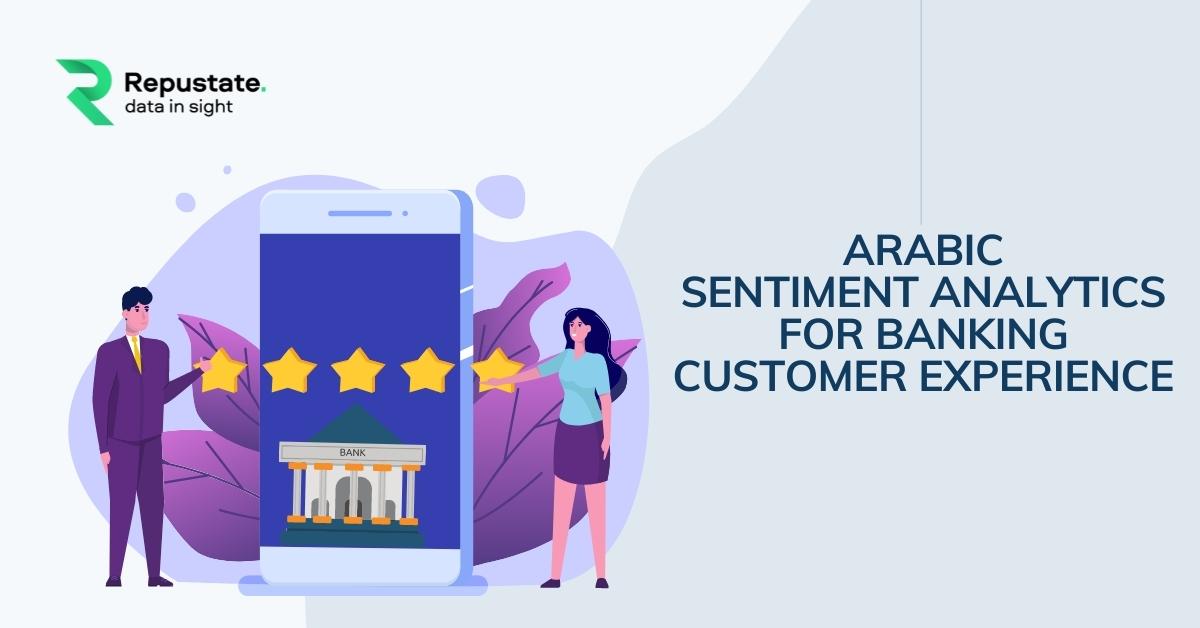
 Jeremy Wemple
Jeremy Wemple
 Dr. Ayman Abdelazem
Dr. Ayman Abdelazem
 Dr. Salah Alnajem, PhD
Dr. Salah Alnajem, PhD
 David Allen
David Allen

 Repustate Team
Repustate Team

